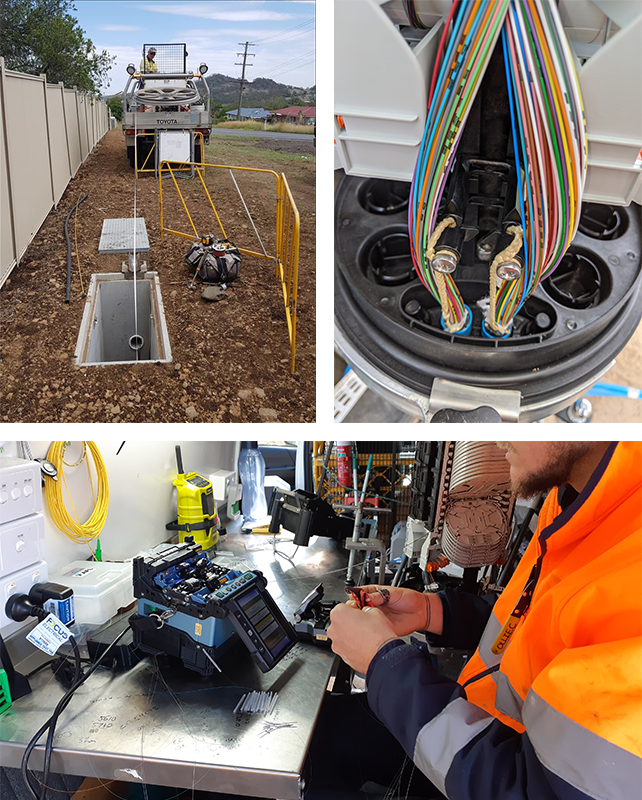

SCROLL
Backhaul cable to provide missing piece in Queensland network puzzle
Matt Van Hecke, Managing Director Torus Networks - Project Helios

A missing piece of the telecommunications puzzle connecting Queensland directly to the world is an open access backhaul cable that will link Brisbane and the new Sunshine Coast submarine cable which landed in Maroochydore on 23 December 2019 – only the second landing site on Australia’s east coast.

The Sunshine Coast branch connects to the Japan-Guam-Australia South (JGA South) cable linking to Tokyo and Los Angeles via Guam (with further planned cables to South East Asia from there).
Queensland company Torus Networks is undertaking Project Helios to complete the missing backhaul link that will break open the market by offering dark fibre to its partners, allowing them to control their own networks and capacity. It will also enable them to unlock the benefits of the Sunshine Coast submarine cable without spending massive capital, while keeping operating costs low.
Managing Director Matt Van Hecke is adamant that much of Australia’s future domestic terrestrial backhaul industry will be based on this new consortium model concept.
“That’s what has been happening in the submarine cable industry for the last 10 years. It went from submarine cables built by incumbents, telco operators and governments, to being built by consortia or individual companies backed and financed, or joint ventures,” he said.
“It would have been easy for the JGA South cable to land in Sydney only. It’s revolutionary to include a branch into the Sunshine Coast. That’s game changing. Generationally changing. Even life changing.”
Matt said there had been an increasing groundswell of interest since the submarine cable landed in Maroochydore last year.
“People have become more convinced of the logic of it and want to see the Brisbane backhaul happen because it will open all the capacity up to the rest of Queensland.”
Attracting diversity and triversity
Torus Networks has been building and operating optical fibre networks in Queensland since 2013, providing critical infrastructure to areas not serviced by the major carriers. The company has also been working with QCN Fibre, the state government backhaul provider, with backhaul builds planned for other regional areas.
“The connectivity offered regionally via QCN Fibre and our backhaul builds will connect those areas to the Sunshine Coast submarine cable with latency that’s comparable to Brisbane and Sydney. They won’t be relying on Sydney to feed Brisbane to feed the rest of Queensland. Their data will be able to come directly to the Sunshine Coast and go out to Asia and the United States,” Matt said.
“At some point, it will start to draw Sydney and Melbourne traffic – the Sunshine Coast, Brisbane and south east Queensland have a lot of long-term potential in the coming decades to compete with Melbourne in terms of connectivity, data centres, and adoption of technology. That will take a second and third submarine cable, but the potential is there to attract people looking for diversity and triversity.”
Torus Networks is also a 50/50 joint venture partner in the Open Infrastructure Group which is tasked with improving connectivity for all Queenslanders across networks, data centres, and submarine cables.
Sunshine Coast branch opens new possibilities for resilient networks
Open Infrastructure Group CEO Luke Baker says having Queensland’s internet infrastructure reliant on connecting to Sydney first and then out to the world adds complexity and risk, particularly for businesses.
“RTI’s branch cable to the Sunshine Coast opens Queensland to new possibilities when building networks with resiliency. It also allows us to build networks that aren’t 100% Sydney-centric.
“With bushfires a very real risk to terrestrial inter-capital fibre routes and Covid-19 limiting travel from and into Queensland, having redundancy that the RTI cable provides us will be critical to mitigating these risks into the future,” Luke said.
“All networks ultimately point to Sydney, and even those networks still point predominantly towards the US. The JGA South cable through Guam connects directly to One Wilshire building in LA – the most connected place on earth. That’s incredible to have on the Sunshine Coast.”
Luke says one of the driving factors around connectivity is latency – the time it takes data to get from point A to B and back again.
“All of a sudden, a network in Bundaberg (385 km north of Brisbane) could point back to the Sunshine Coast and end up in Los Angeles without having to go to Sydney first. Even 15-20 milliseconds of latency have huge implications when talking about real-time communication, particularly gaming, medical industries, remote health and self-driving cars,” Luke said.
“Data is now the most valuable commodity on the planet. If you think about submarine cables, they still traditionally follow trade routes - essentially what RTI has done is build a new port on the Sunshine Coast which allows trade to flourish here.”
Project Helios
- 140km high count open access wholesale dark fibre backhaul cable.
- Brisbane-Petrie-Caboolture-Sippy Downs-Maroochydore (with a regeneration facility at Petrie)
- Cost: Approx $10 million with an expected lifespan of 25+ years.
- Construction timeline: September 2020 – June 2021.

About Torus Networks
- Founded in 2013
- Australian licenced telecommunications carrier
- Neutral provider in terrestrial backhaul space

Queensland projects
- 2013 - Private fibre network between Surat and Gladstone that controls gas drilling, compression stations and export pipeline for liquid natural gas industry.
- 2017 - 30km duct and cable ring for Pulse data centre near Toowoomba.
- 2019 – 130km 720-core cable network ring from Polaris data centre in Springfield to Eight Mile Plains, Brisbane, Kenmore, Ipswich and back to Springfield.
- Working with Queensland State Government backhaul provider QCN Fibre.
Contact
Contact one of our regional representatives for more information about RTI. If you want to set-up a meeting with us, please leave your name and email, and one of us will reach out to you.
